Laughter and screams echo as students thunder across the playground in a game of tag. Despite the large age gap between high schoolers and preschoolers, they play together seamlessly. The Child Development program here at West prides itself in bettering its students while working with young children. Within this course, students learn the developmental needs of young children and apply that knowledge during visits to the neighboring Early Childhood Center, home to multiple Parkway programs for students between ages two and five.
After taking over the Child Development program four years ago, family and consumer science teacher Kristen Naeger continues fostering the long-standing relationship with the Early Childhood Center and its staff. Due to its accessibility, learning takes place in both the West classroom and the Early Childhood Center.
“Our partnership with the preschool allows [high school] students to observe and apply all that [they] are learning. It also allows students to interact with the younger kids in a controlled and supervised environment. [Additionally,] the preschoolers love working with the big kids,” Naeger said.
Watch and learn
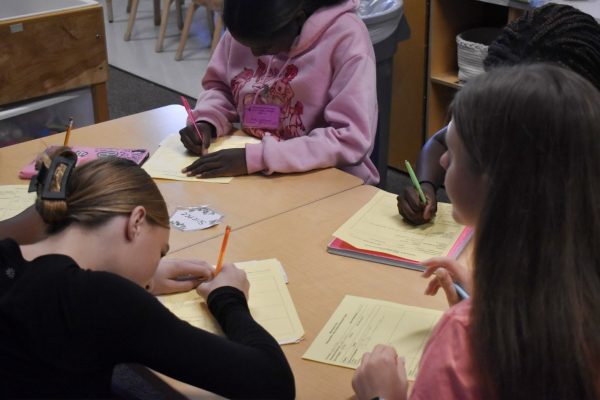
During the class’s Oct. 30 visit to the Early Childhood Center, they were tasked with completing an initial observation. These observations contained findings including the class environment, children’s schedule and children’s behavior. Upon completion of this observation sheet, Child Development students, including freshman Lydia Boles used the remainder of their visit to interact with the students of the Early Childhood Center with their observations in mind.
“I want to be a teacher when I grow up and I thought this would be a great class to take. Filling out the observations helped because I could see how the younger kids were learning and all the regular activities they did throughout their day at school,” Boles said.
The observations set the foundation for the next set of visits throughout the semester. Adapting to the preschool classroom environment allowed high school students to comfortably engage in their varying tasks such as leading a craft activity.
“I hope that my high school students feel more comfortable around small children and feel more confident in their interactions with the kids. Many of my students want a career that requires them to work with children [like] teaching [or] nursing. This gives them hands-on experience,” Naeger said.
Play in progress
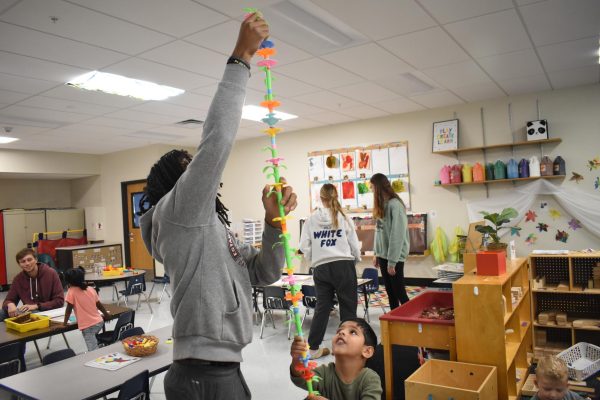
Two weeks after their first visit, high school students visited the Early Childhood Center again. This time, they were given the opportunity to freely join the classroom and interact with the young students for the entirety of the visit. With different groups of high school students assigned to each classroom, the high schoolers were able to experience a variety of different activities and curricula. Junior Sophia Allgeyer is familiar with this process as she took Child Development freshman year and joined the class again as a student aide.
“[Child Development] helped me realize how much I love to work one-on-one with kids. My favorite memory would be when I was a student in the class and went to the preschool; I got to work in the same classroom I was in when I was little and even with the same teacher. She remembered me which I was not expecting since it had been so long. It was weird to think about how I was in the same spot as the kids sitting in that room just years ago,” Allgeyer said.
Getting to experience the natural flow of the classrooms provided insight that otherwise may not be garnered. By interacting with the preschoolers, freshman Sloane Schrewe was able to make further observations about the behaviors of preschool students.
“[I noticed that] when we’re little, we’re not as judgmental. Everyone at the preschool immediately will come up to you and they trust you in two seconds. It’s nice to get away from the typical high school experience. [At] the [Early Childhood Center], everyone interacts and there are no cliques,” Schrewe said.
Fresh air
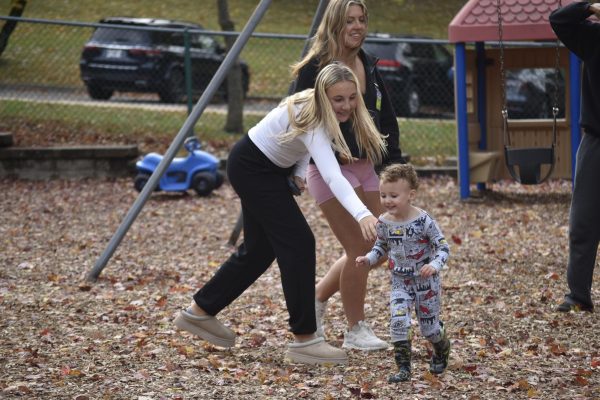
(Laney Thomas)
Weather permitting, the Child Development class joined Early Childhood Center students during their daily time spent outside. The Early Childhood Center also features an indoor play area as an alternative when going outdoors is not an option. Freshman Madelyn Mills got the opportunity to follow her assigned class outside.
“Being able to play with the kids and learn about them [has been my favorite part]. I was playing tag with one of the kids, [but] It’s really hard to entertain them [and] it’s sometimes hard to realize what they’re upset about,” Mills said.
In the Child Development classroom, students learned how to react to possible behavioral situations — from comforting an upset student to de-escalating a tantrum.
“We have practiced a variety of discipline scenarios, so my students will know how to address challenging behaviors. Most of my students are already excited to work with the preschoolers, and it is part of the reason they sign up for the class,” Naeger said.
Practice makes perfect
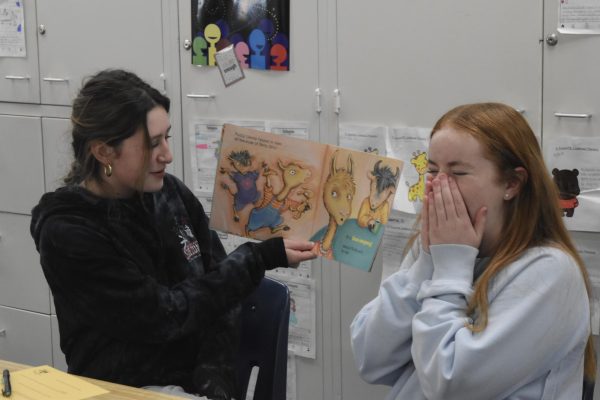
To prepare for their third and final visit, Child Development students chose from an assortment of children’s books to read aloud and create an appropriate craft activity that went along with the story. Schrewe and her assigned group chose the book “Llama Llama Time to Share.” They spent multiple class periods practicing their tone and reactions while reading to hold the preschoolers’ attention.
“We [went] back and forth taking turns with different books [so] we all got an opportunity to read. Then we practiced [commentating]. In the book, if it [says] stomping or eating, we’ll do the [respective] gestures to our table. [One] of the books was about dinosaurs, and we were roaring,” Schrewe said.
The lengthy preparation process allowed the high schoolers to refine their read-aloud skills, including pace and delivery. Students worked in groups to simulate their final presentations and ensure a cohesive flow.
We spent multiple days getting ready for the Interactive Storybook activity. Expectations and goals were clearly defined, and students got time to collaborate with each other and receive immediate feedback as they planned,” Naeger said.
Bringing words to life
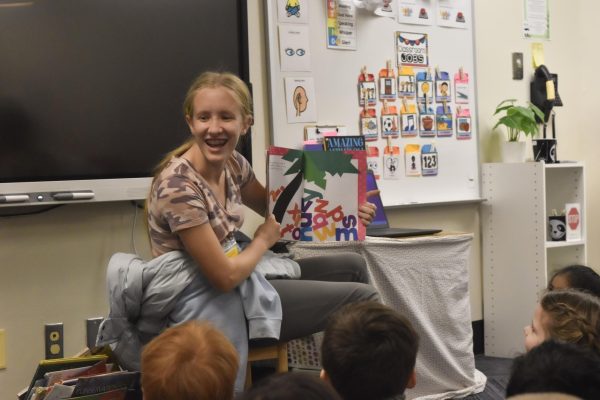
Upon the arrival of their final visit of the semester, Child Development students gathered with their groups and joined their respective classes for the last time on Dec. 12. It was time to utilize their learned skills and present their chosen books to the children. Chosen as the “storyteller,” freshman Eliza Jones had to be prepared to adapt and adjust to any possible chaos that might arise from the young Early Childhood Center students.
“[My biggest takeaway] is kids develop a lot, and it’s really important to be [there] for them every step of the way. We learned about kids’ attention spans and how to retain their attention, especially with activities that they might have already [done] before,” Jones said.
Reading to the young students put the Child Development high schoolers in a unique position where they filled a teacher-like role while also reminiscing childhood memories.
“[Child Development] allows time to play, which is not something that we get to do often at the high school level. It provides an opportunity for my students to reconnect with their past childhood selves, as they plan craft activities and games, and read through some of their favorite childhood books,” Naeger said.
Coloring outside the lines
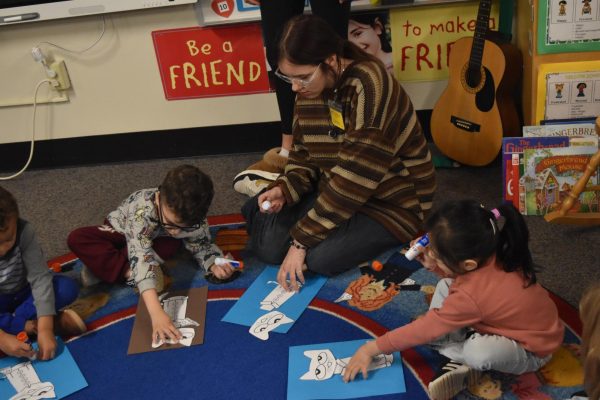
After reading their chosen stories, Child Development students presented the craft projects they had prepared to go along with the stories. To efficiently teach and assist Early Childhood Center students during these activities, the high schoolers completed research in class.
“We created an activity for them to do afterward. So we had to figure out what was developmentally appropriate. [For example, how] many of the kids would be able to use the scissors?” Jones said.
To help prepare the high school students, Naeger not only used traditional lessons but also interactive activities.
“[In class], students had to practice cutting out a small paper teddy bear using their non-dominant hand. This allowed the students to view this activity from the perspective of the preschooler who is just learning to use scissors and cut,” Naeger said.
At the end of one semester, the Child Development program provided high school students with applicable knowledge from prenatal development to parenting styles as well as first-hand experience working with younger children. Through collaboration, this class inspires and supports numerous students’ future aspirations for a career in the child developmental field.
“Many [high school students] share stories and memories from their own preschool days and the fun they had, while [other] students want opportunities to help others, and this is the perfect opportunity for them to do just that. Many of my former students are now teachers, and I love that my class played a significant role in that decision for their careers,” Naeger said.

![Raising his arm for a high five, freshman Abram Brazier plays with Early Childhood Center students during his first visit of the semester. Brazier joined his assigned class during their designated outdoor time. “[Child Development] gives me experience with how to talk [to] kids. We read them a book so knowing how to talk to them [was helpful]. Most of the [preschoolers] just came right up to us [and] played around,” Brazier said.](https://pwestpathfinder.com/wp-content/uploads/2025/01/gallery2-1200x800.jpg)


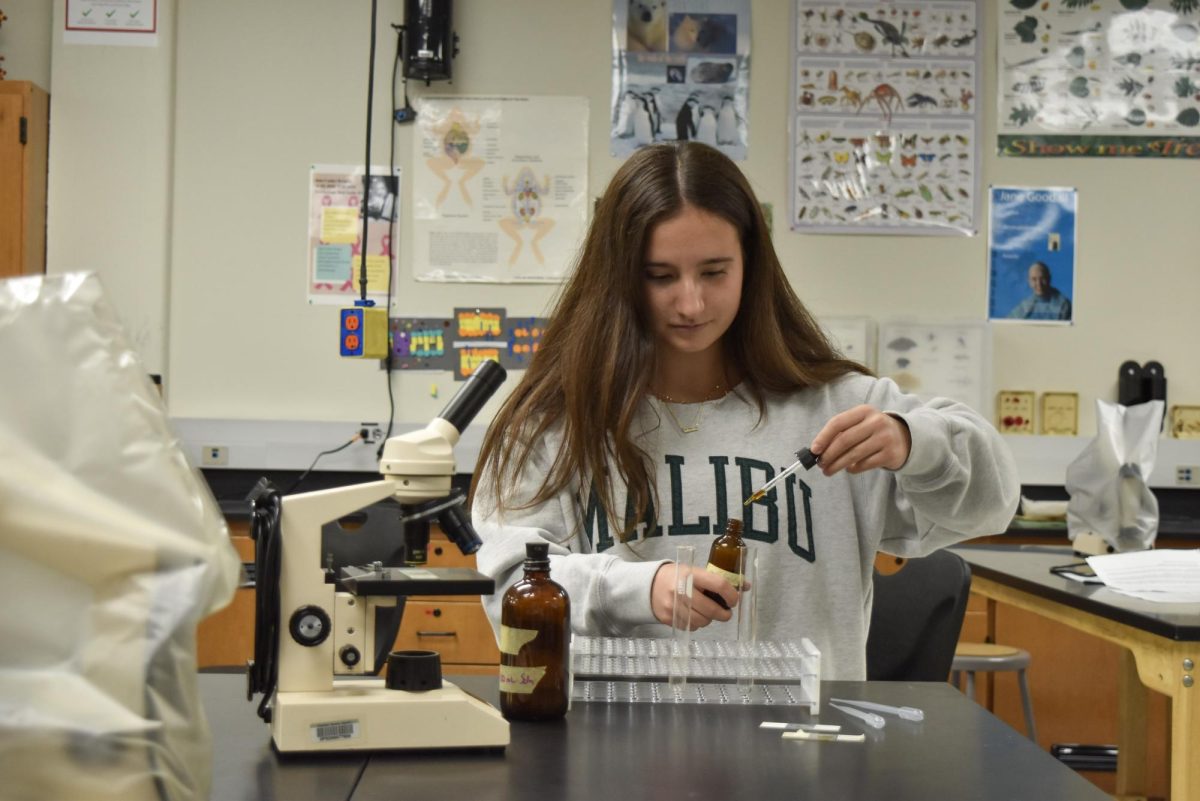
![Smiling in a sea of Longhorns, Fox 2 reporter Ty Hawkins joins junior Darren Young during the morning Oct. 3 pep rally. The last time West was featured in this segment was 2011. “[I hope people see this and think] if you come to [Parkway] West, you will have the time of your life because there are so many fun activities to do that make it feel like you belong here. I was surprised so many people attended, but it was a lot of fun,” Young said.](https://pwestpathfinder.com/wp-content/uploads/2025/10/Edited2-1200x798.jpg)
![West High seniors and families listen as a representative of The Scholarship Foundation of St. Louis, Teresa Steinkamp, leads a Free Application for Federal Student Aid (FAFSA) workshop. This session, held in the library, provided guidance on financial aid, scholarships and student loan options. “This event is very beneficial for any seniors who are applying to or considering applying to colleges after high school [because] the cost of college is on the rise for seniors and parents,” college and career counselor Chris Lorenz said.](https://pwestpathfinder.com/wp-content/uploads/2025/09/DSC_4478-1200x778.jpg)
![Senior Kamori Berry walks across the field during halftime at the Homecoming football game on Sept. 12. During the pep assembly earlier that day, she was pronounced Homecoming Queen. “I thought it was nice that the crowd [started] cheering right away. I know [my friends] were really excited for me, and my family was happy because typically non-white people don't win,” Berry said.](https://pwestpathfinder.com/wp-content/uploads/2025/09/DSC7046-Enhanced-NR-1200x798.jpg)

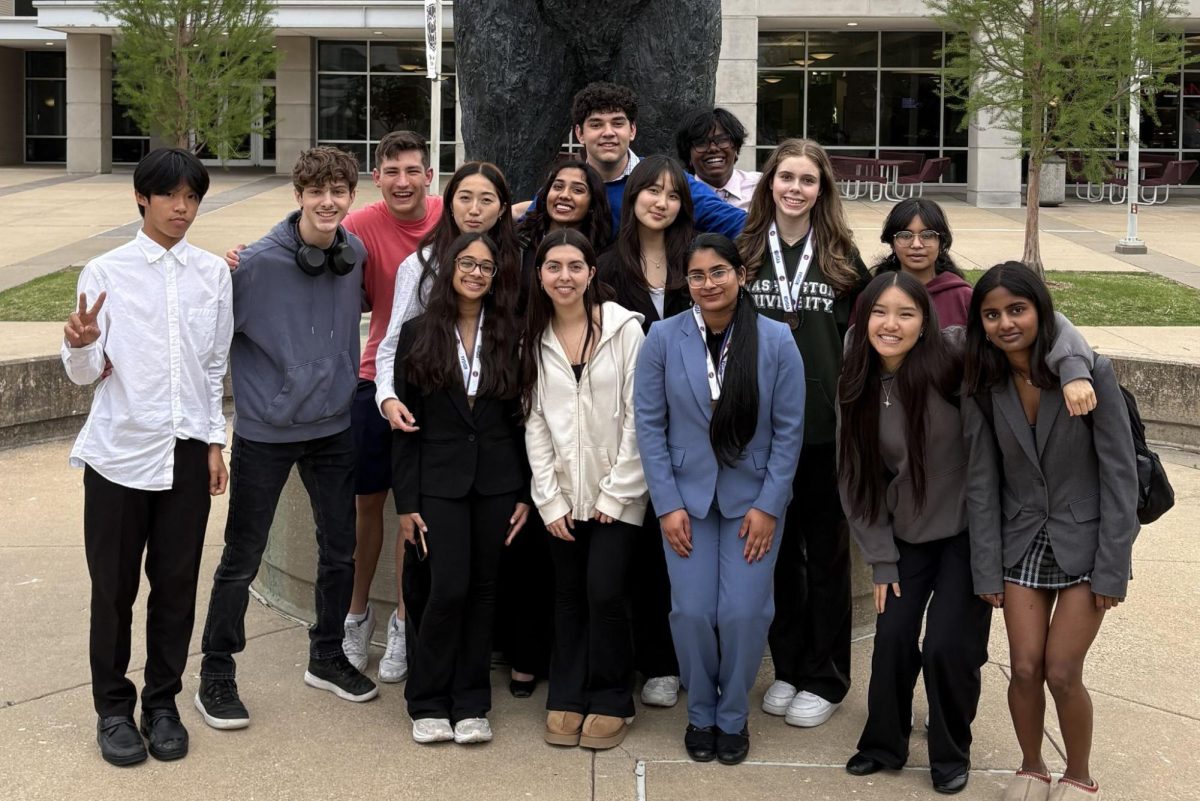
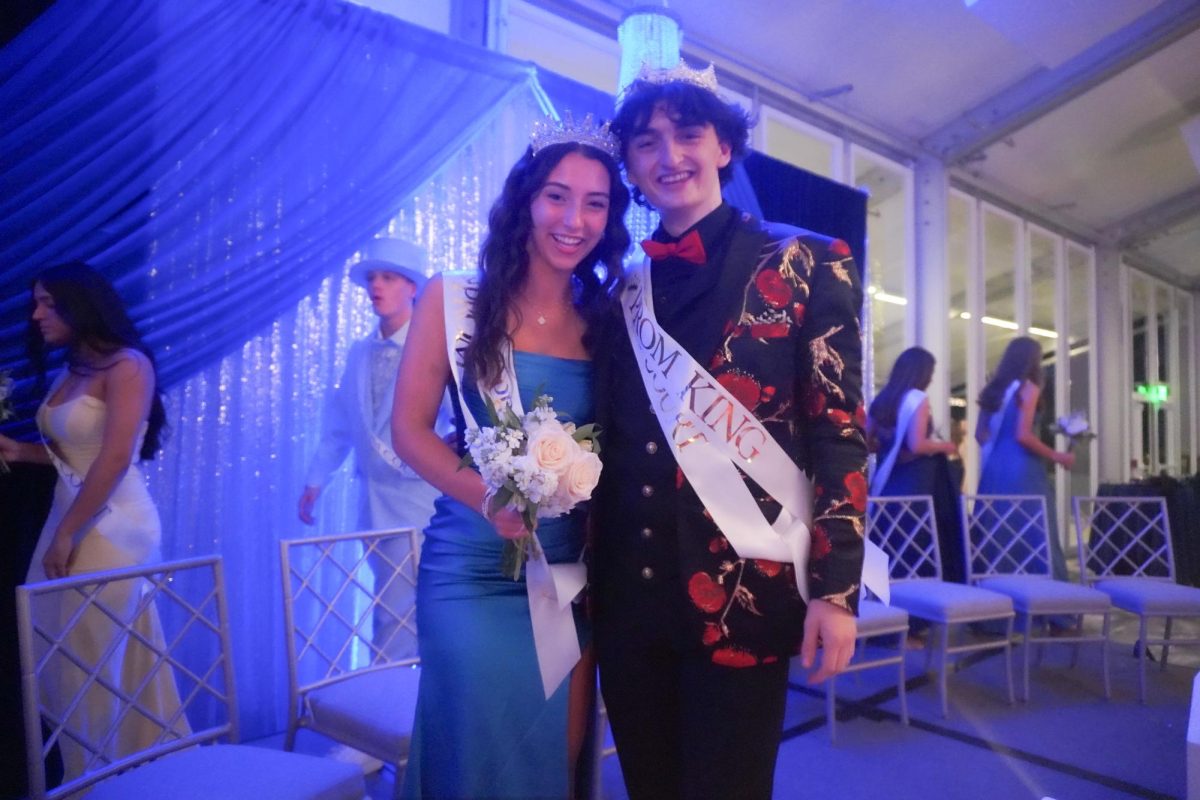
![Pitching the ball on Apr. 14, senior Henry Wild and his team play against Belleville East. Wild was named scholar athlete of the year by St. Louis Post-Dispatch after maintaining a high cumulative GPA and staying involved with athletics for all of high school. “It’s an amazing honor. I feel very blessed to have the opportunity to represent my school [and] what [it] stands for,” Wild said.](https://pwestpathfinder.com/wp-content/uploads/2025/05/unnamed-6-1200x714.jpg)
![The Glory of Missouri award recipients stand with their certificates after finding out which virtue they were chosen to represent. When discovering their virtues, some recipients were met with contented confirmation, while others, complete surprise. “I was not at all surprised to get Truth. I discussed that with some of the other people who were getting the awards as well, and that came up as something I might get. Being in journalism, [Fellowship of Christian Athletes and] Speech and Debate, there's a culture of really caring about truth as a principle that I've tried to contribute to as well. I was very glad; [Truth] was a great one to get,” senior Will Gonsior said.](https://pwestpathfinder.com/wp-content/uploads/2025/04/Group-Glory-of-Missouri.jpg)
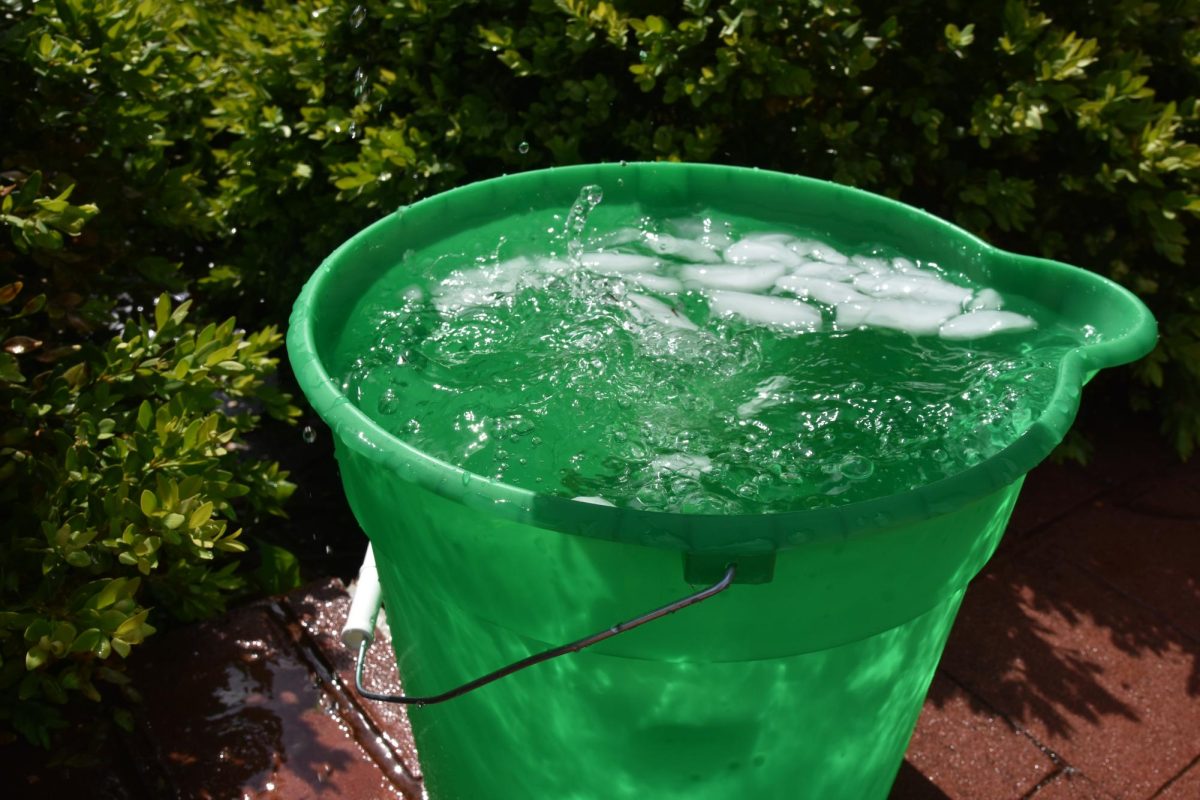
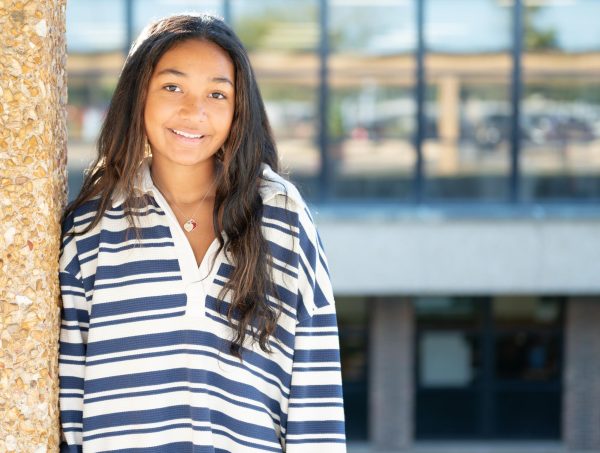
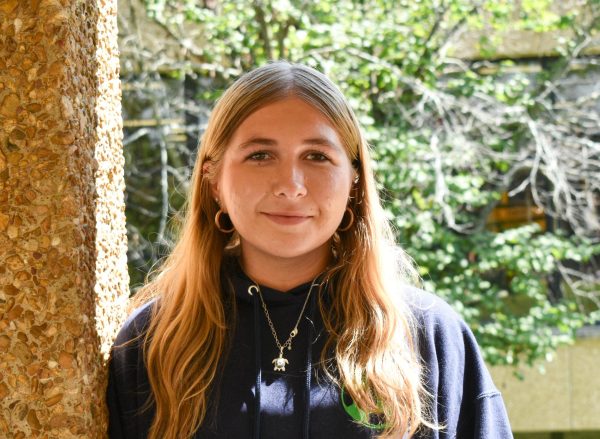
Aminah Hilaly • Feb 6, 2025 at 11:11 am
I am so proud of you Payton, this is such an amazing piece!!
Cindy Phung • Jan 16, 2025 at 9:52 am
Such great work Payton!! I’m so proud of the effort and dedication you put into this piece.
Sage Kelly • Jan 14, 2025 at 11:13 am
This is an amazing piece, Payton! I can tell you put a lot of time into it, and it turned out fantastic! I love the photos and quotes!!